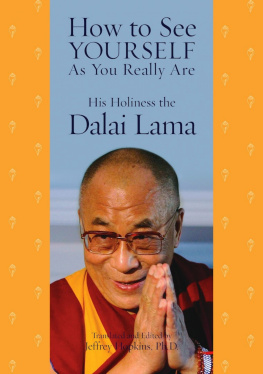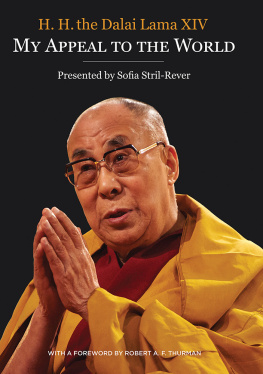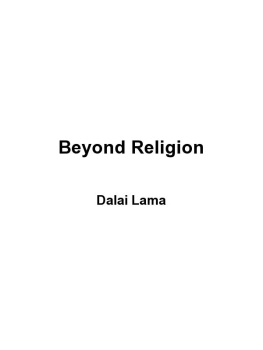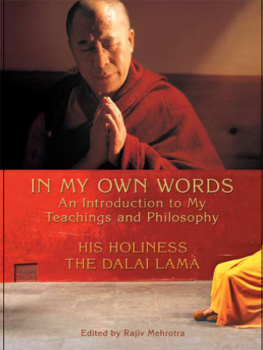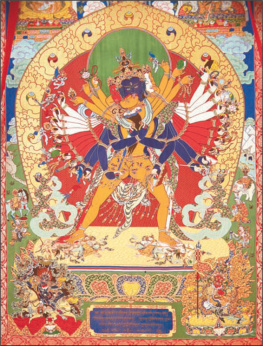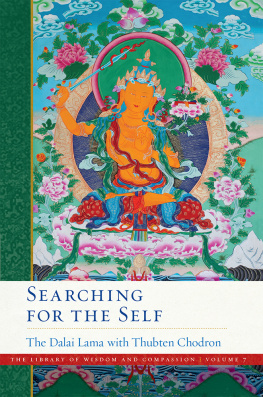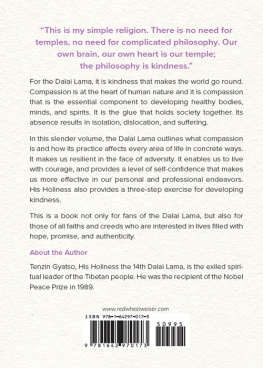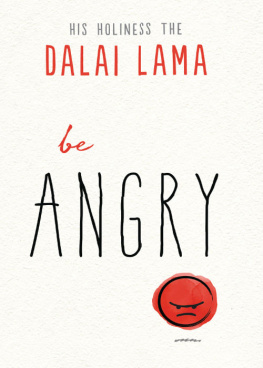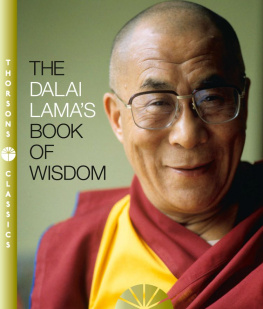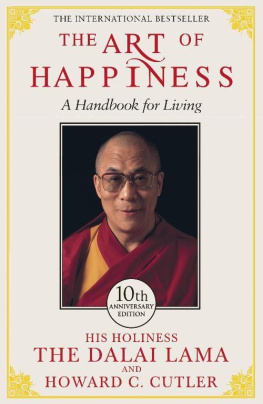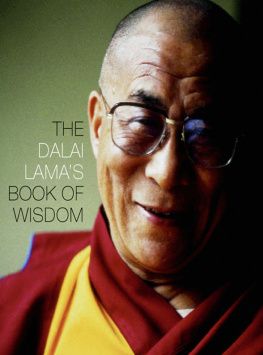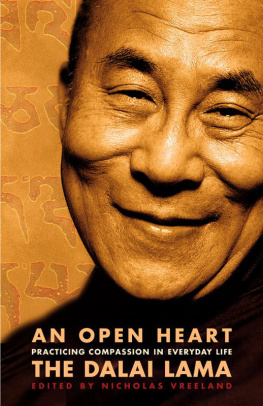Worlds In Harmony
Parallax Press
P.O. Box 7355 Berkeley, California 94707
Parallax Press is the publishing division
of Unified Buddhist Church, Inc.
This edition copyright 2008 by
Foundation for Universal Responsibility.
Original edition copyright 1992
by Foundation for Universal Responsibility.
All Rights Reserved.
Cover and text design by Gopa & Ted2, Inc.
Library of Congress Cataloging-in-Publication Data
Bstan-dzin-rgya-mtsho, Dalai Lama XIV, 1935-
Worlds in harmony : compassionate action for a better world / His Holiness the Dalai Lama.
[2nd ed.].
p. cm.
Previously published: c1992.
Based on the October 1989 Harmonia Mundi conference held in Newport Beach, Calif.
ISBN 978-1-935209-40-9
1. BuddhismPsychology. 2. PsychotherapyReligious aspectsBuddhism. I. Title.
BQ7935.B774W67 2008
294.3'3615dc22
2008030443
1 2 3 4 5 / 12 11 10 09 08

The Dalai Lama

Contents
T HE GENERATION now alive is the first in human history to glimpse the possibility of the end of nature, the end of our world. The Bulletin of Atomic Scientists has a clock that tracks how close we are to the final hour for human beings, and that clock has been close to midnight for many decades. For a long time it was because of the nuclear peril; now it is also because of the ecological perilthe spreading of deserts, the pollution of air and water, the heating of the planet, the worlds trees being felled at acres per minute, and on and on. What we are doing to the planet now is no different from what we have been doing to humanity for some time.
We produce more food today than ever before in human history, yet more people are starving than ever before. Some people are astronomically wealthy, yet the gap between rich and poor is only widening. When the Cold War ended, many people spoke of the triumph of democracy. But oppressive regimes and occupations are thriving. We have seen the worst genocides of history: the Holocaust of World War II, a million Cambodians killed by the Khmer Rouge, as well as the more recent genocides in Rwanda and Darfur.
With the advent of instantaneous communication, we are left with no room for excuses. We are able to see the poverty and disease, the hunger and oppression, the growth of deserts, and the shrinking of forests. We see all too clearly the suffering, both individual and planetary. Ours is a world out of harmony. And yet we have the potential and the ability to set things right. This is the basis of this book.
The Dalai Lama represents a great culture centered on a wisdom tradition that has survived intact into modern times. And the fragility of our times is demonstrated by the fact that even that culture survives only in exile. Science and technology have brought immense control over nature, but power without wisdom is dangerous. We need to balance our modern capabilities with an ancient wisdom. His Holiness the Dalai Lama often speaks of the interconnectedness of all things. In a sense, that means we are all in this together. He has said, also, that just because these times are so dire, it is a great honor to be alive now, at this moment, on this planet. It is we who bear the responsibility, who face the challenge, who must take care of the planet, not just for ourselves, but for the future and for our children.
C OMPASSION, LOVE, and altruism are not just religious qualities. As human beings, and even as animals, we need compassion and affection to develop, sustain ourselves, and survive. Even before we were born, when we were still in the womb, our mothers calmness was very much related to ours. Then, during the first few weeks after birth, a very crucial period for our development, even such simple things as our mothers touch were very important in developing our brain. For the next few years, without the kindness or affection of our parent or some other adult, we could not have survived. Now, as adults, we still need someone we can trust, someone from whom we can receive affection; and when we become old, we will again be heavily dependent on others to care for us. This is the human way of life.
Our future depends on the younger generation. In order to develop a generation of healthy human beings, it is important to offer them a compassionate environment when they are still small. It is easy to recognize children whose parents, for various reasons, have neglected them, and who, as a result, have a helpless, insecure feeling. Their minds are always agitated, and, in fact, their whole lives are somehow ruined. In a healthy family, where children receive consistent affection and protection, the children are very happy and develop self-confidence. As a result, their health is better and their lives become something of value. Compassion and affection are crucial for this.
What is the purpose of life? I believe that satisfaction, joy, and happiness are the ultimate purposes of life. And the basic sources of happiness are a good heart, compassion, and love. If we have these mental attitudes, even if we are surrounded by hostility, we will feel little disturbance. On the other hand, if we lack compassion and our mental state is filled with anger or hatred, no matter what the situation, we will not have peace. Without compassion, we feel insecure, and, eventually, we will feel fear and a lack of self-confidence. Then even something small can destabilize our inner world. But if we are calm, even if we are confronted by a serious problem, we will know how to handle it. In order to utilize human intelligence fully, we need calmness. If we lose our stability through anger, it becomes difficult to use our intelligence well. If we are unstable and influenced by negative thoughts, our intelligence will be used wrongly. Looking at human history over the last few thousand years, we can see that the greatest tragedies have been caused by human hatred, fear, and suspicion.
In the modern economy, every nation is dependent on every other nation. Even hostile nations must cooperate in economics and in the use of the worlds resources. So, in both the global reality and the situation in the family, human beings need harmony and cooperation. Genuine cooperation comes not through force, but through mutual respect. An altruistic attitude is the most crucial factor.
If an individual has a sense of responsibility for humanity, he will naturally take care of the environment, including doing his part to slow down industrial growth and population growth. If we think narrow-mindedly and see only our own surroundings, we will not create a positive future. In the past, when we neglected the long-term consequences of our actions, it was less serious. But today, through science and technology, we can create far greater benefits or much more damage. The threat of nuclear weapons and the ability to damage our environment through deforestation, pollution, and global warming are quite alarming. We can all see the dangers of potential tragedies here. But other, barely noticeable changes, such as the loss of natural resources like topsoil, may be even more dangerous because, by the time they begin to affect us, it will be too late. Therefore, in all respects, we see that genuine cooperation, the real sense of responsibility based on compassion and altruism, requires not only that we respect human beings, but also that we respect, take care of, and refrain from interfering with other species and the environment. On every level of work concerning the happiness or satisfaction of the individual, the family, the nation, and the international community, the key is the altruistic mind.
Next page

